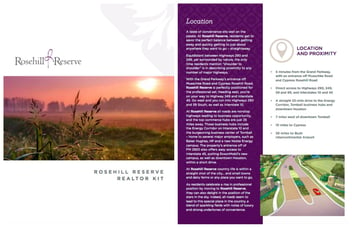The evolution of the workplace has taken a dramatic turn in recent years, with remote work reshaping how and where we engage in our professional lives. An innovative trend that’s gaining traction among urban planners and developers is the inclusion of coworking spaces within master-planned communities. This development not only caters to the demand for flexible work environments but also strategically enhances community living by encouraging both social interaction and professional collaboration.
Workspace Integration
Master-planned communities are renowned for their holistic amenities, which traditionally include parks, shopping centers, and leisure facilities. The integration of coworking spaces brings a novel dimension of convenience and utility, serving residents who prefer to work remotely yet miss the structured atmosphere of a conventional office. These coworking areas offer professional-grade facilities like high-speed internet, meeting rooms, and office equipment, all just a short walk from home.
These spaces can often be seamlessly integrated with existing property management offices or combined with community clubhouse infrastructures, utilizing the same resources and facilities. This dual-use approach minimizes additional expenditures while maximizing the utility of the space. Developers can adapt a single area, such as a clubhouse, to serve multiple functions effectively. During business hours, it can operate as a property management hub and transform into a coworking space at other times.
Enhancing Marketability
For developers, the integration of coworking spaces serves as a strategic enhancement that increases the marketability of their properties. This feature appeals to a broad audience, including freelancers, entrepreneurs, and telecommuters, who value both the flexibility of remote work and the efficiency of a traditional office setup. By adding these spaces, developers not only boost the community's appeal but also enhance property values.
Residents enjoy the dual benefits of proximity and functionality, allowing them to merge the comfort of home with the productivity of an office setting. This proximity reduces commute times, cuts down on transportation costs, and helps residents maintain a clear separation between work and personal life.
In Texas, several master-planned communities have embraced the trend of incorporating coworking spaces into their infrastructure. For instance, the Pecan Square community in Northlake features a modern two-story coworking center that includes cozy nooks and meeting rooms, making it a versatile space for residents . Similarly, the community known as Harvest, located in Argyle/Northlake, includes a coworking space within its Greeting House, providing a convenient work environment for residents.
Looking Forward
Integrating coworking spaces also promotes environmental sustainability by reducing the need for daily commutes, thereby decreasing traffic and lowering emissions. As work dynamics continue to evolve, communities that offer flexible working arrangements are likely to remain appealing and resilient in the face of changing lifestyle and work preferences.
On-Target! Marketing collaborates with real estate developers to harness this trend and effectively market these innovative communities. By crafting precise marketing strategies and leveraging digital campaigns, On-Target! helps position real estate developments as ideal choices for prospective buyers seeking modern conveniences aligned with dynamic professional and personal needs.



Leave A Comment